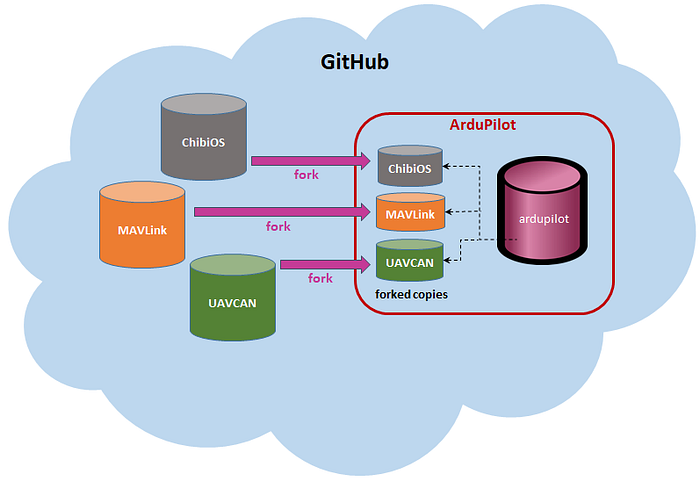In software development, it’s common to work with multiple repositories — whether you’re integrating third-party libraries or maintaining shared code across different projects. Managing these external dependencies efficiently can be a challenge. That’s where GitHub Submodules come in handy.
Submodules allow you to include one Git repository as a subdirectory of another, while keeping both projects linked yet independent. This approach is especially useful when you have a large project that relies on other projects (like libraries or shared modules) and need to keep everything in sync. In this article, we’ll walk through what GitHub Submodules are, how to set them up, and how they help you manage code more effectively.

What Are GitHub Submodules?
A submodule is essentially a pointer to a specific commit of another Git repository, allowing you to include and track that repository as part of your own project. Think of it as a way to nest one project within another while maintaining separate version control.
For example, if you have a project that relies on a custom library stored in a separate GitHub repository, you can add it as a submodule to your main project. This way, the main repository only tracks the specific version of the library it needs, and any updates to the library can be pulled in without disrupting the project.
Why Use GitHub Submodules?
Here are a few scenarios where submodules can greatly improve your code management:
- Shared Code Across Projects: If multiple projects rely on the same code (like utility functions or configuration files), using submodules lets you manage the shared code in one place, ensuring consistency across projects.
- Third-Party Libraries: You can include third-party libraries as submodules, keeping track of exactly which version you’re using. This helps avoid dependency issues when different versions of a library might break your code.
- Team Collaboration: In team environments, submodules provide a clean way for developers to work with different parts of a project without causing conflicts in the version control system.
How to Set Up GitHub Submodules
Setting up a submodule in Git is straightforward. Here’s a step-by-step guide:
1. Initialize the Main Repository
Start by initializing or cloning the main Git repository where you want to add the submodule.
git clone https://github.com/your-main-repo.git
cd your-main-repo2. Add the Submodule
To add a submodule, run the following command:
git submodule add https://github.com/your-submodule-repo.git path/to/submoduleThis command adds the submodule repository to your main project and stores it in the specified path.
3. Initialize and Update the Submodule
Once the submodule is added, you’ll need to initialize and fetch its data:
git submodule update --init --recursiveThis will ensure that your submodule is properly set up and synced with your main repository.
4. Cloning a Project with Submodules
When someone clones your repository with submodules, they’ll need to initialize and update the submodules after cloning:
git clone https://github.com/your-main-repo.git
cd your-main-repo
git submodule update --init --recursiveThis ensures that they’ll get the correct versions of the submodules as well.
5. Managing Submodule Updates
If the submodule repository updates over time, you can bring those changes into your main repository by navigating to the submodule directory and pulling the latest changes:
cd path/to/submodule
git pull origin mainAfter pulling updates, you’ll need to commit the updated submodule reference in your main project:
git add path/to/submodule
git commit -m "Update submodule to latest version"Pros and Cons of GitHub Submodules
Pros:
- Version Control: Submodules track specific versions of external repositories, ensuring that your project remains stable with the correct dependencies.
- Modularity: They keep your projects modular, allowing independent development and versioning of different components.
- Consistency: It’s easier to maintain consistency across different projects that rely on the same submodule.
Cons:
- Complexity: Submodules can introduce additional complexity to your workflow, especially when syncing or merging repositories.
- Maintenance: Keeping submodules up to date requires manual effort, especially in large projects with multiple dependencies.
Best Practices for Using Submodules
- Use Submodules for Libraries, Not Features: Submodules work best for shared libraries or components, not feature branches within the same project.
- Keep Submodules Simple: Avoid nesting submodules too deeply as this can lead to confusion and increase the complexity of your project.
- Document the Workflow: Make sure your team is aware of the steps needed to clone, update, and commit submodule changes.
Explore more detailed content and step-by-step guides on our YouTube channel:-
Conclusion
GitHub Submodules are a powerful way to manage dependencies and shared code across repositories, especially in large projects. While they add a layer of complexity, their benefits in terms of version control, modularity, and consistency make them worth the effort when used correctly. By following best practices and understanding how to work with submodules, you can improve the efficiency and organization of your codebase, keeping everything running smoothly.
Connect with Me:
- YouTube ► S3 CloudHub Channel
- Facebook ► S3 CloudHub Page
- Medium ► S3 CloudHub Blog
- Demo Reference ► GitHub Repository
- Blog ► S3 CloudHub Blogspot
- Dev ► S3 CloudHub on Dev.to

No comments:
Post a Comment